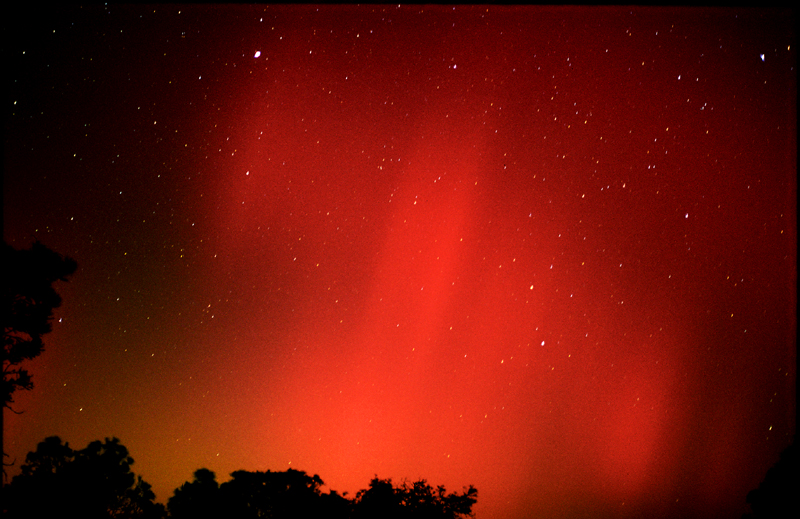
15:35 UT.
30 seconds exposure. Kodak Max 400 film.
50mm Nikkormat lens at f/2.
The aurora between the bright star Canopus (top) and the tail of Canis Major. (just setting at right)
So far this solar maximum only one small aurora had been observed from Perth. However, on March 26 an alert was sent via email that a massive sunspot complex that was easily visible to the naked eye had appeared on the sun and that this region was very active. 2 days later came another email advising that several major flares had erupted and that a full coronal ejection had taken place. Observers were warned that mid-latitude aurora were likely in the coming days. With this in mind I went a purchased a new roll of film. Just in case........!
On March 31, I was observing with two friends at our site near Yanchep, about 50km north of the centre of Perth, the capital city of Western Australia. This site is our general observing site. The skies to the north, east and west are dark, with a limiting magnitude of about 6.8. However to the south, the light pollution of the city reaches up about 50 degrees and has a limiting magnitude of about 5.0.
A very strong eastern wind severely hampered photography so we undertook general observing until moonset which occurred around 11.30. As the moon set I suddenly noticed two bright columns of light streaming up from the south-western horizon. I called out to the others wondering what they were. Then I noticed that the sky in the south-west was getting brighter. I immediately screamed out

We watched as the aurora brightened rapidly and displayed a few bright rays. It was centred about 10 degrees west of due south, and about 40 degrees in azimuth and about 35 degrees in altitude. A very strong red colour was evident in most of the display, with some green low on the horizon.
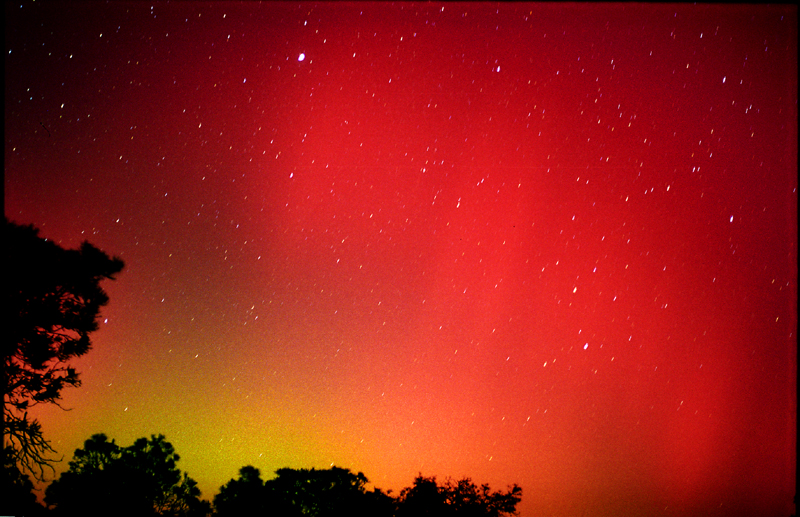
After about 30 minutes the display faded until it was lost in the light pollution. A few minutes later a weak display was visible to the south-east. This remained visible for about 10 minutes.
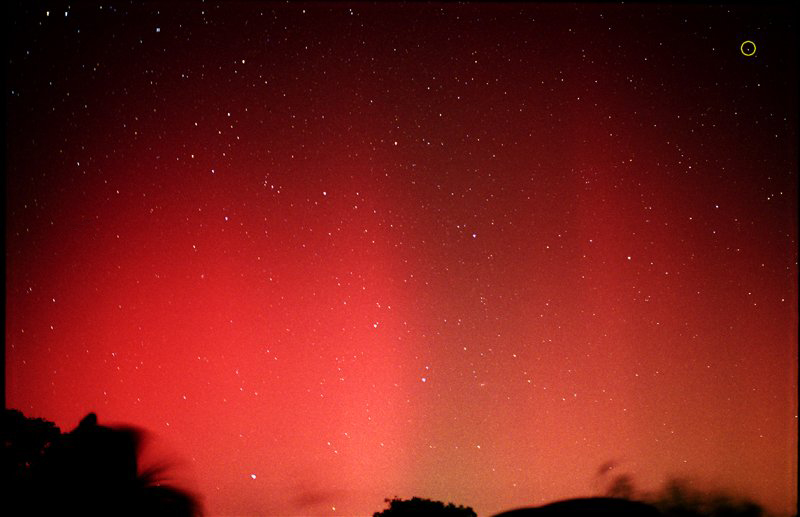
For the next 2 hours, the only indication that the aurora was still active was a small reddish glow that fluctuated in brightness.
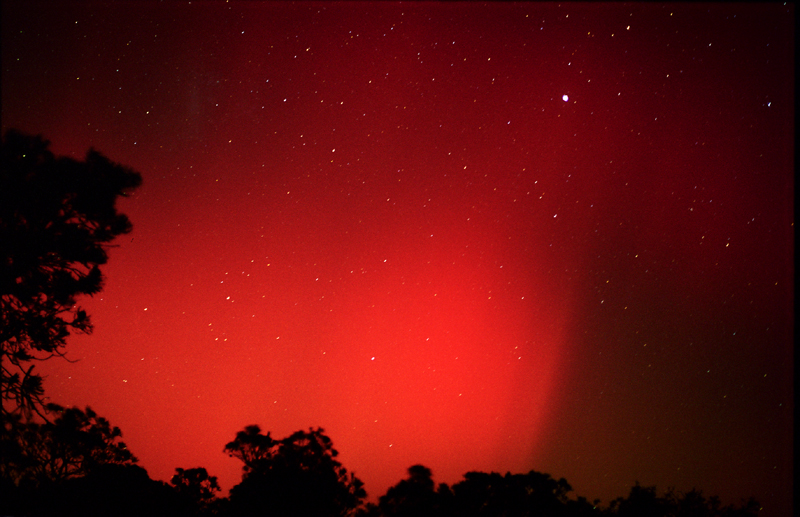
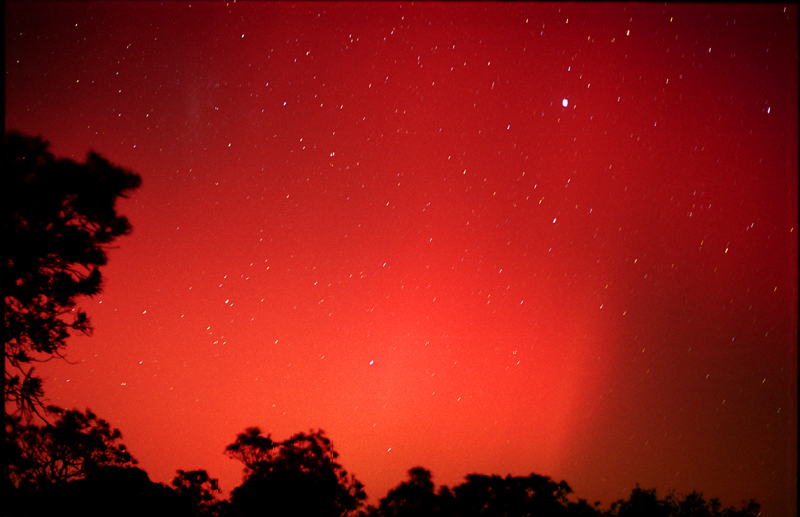
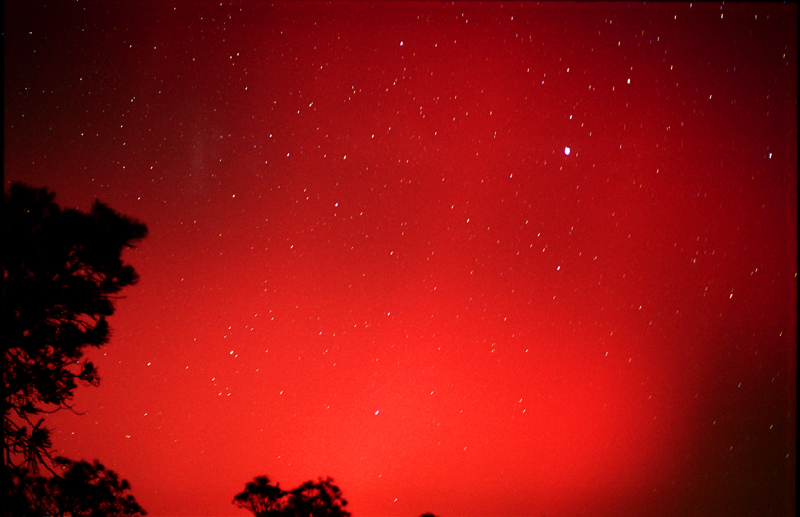
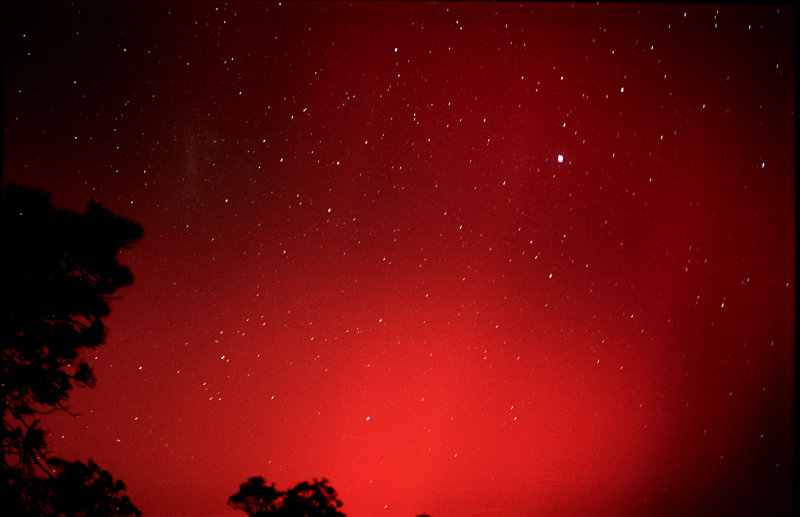
At one stage, the aurora was visible well to the west of Sirius and later a small patch situated almost due west and about 20 degrees up from the horizon was all that was visible. This was very strange, to see such an isolated patch so far from south.
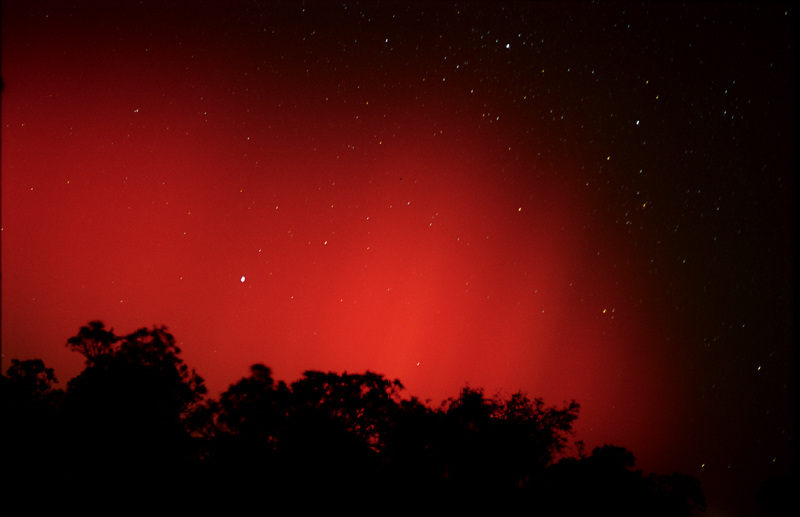
Around 1.00am local time several bright rays appeared to the south. Almost immediately the aurora surged in brightness and extent. It reached about 120 degrees in azimuth, centred on due south, and reached up about 60 degrees from the southern horizon. Again the display was a very strong red with green visible on the horizon. Numerous bright rays were visible, each lasting a couple of minutes. This surge in brightness resulted in more frantic photographic activity!
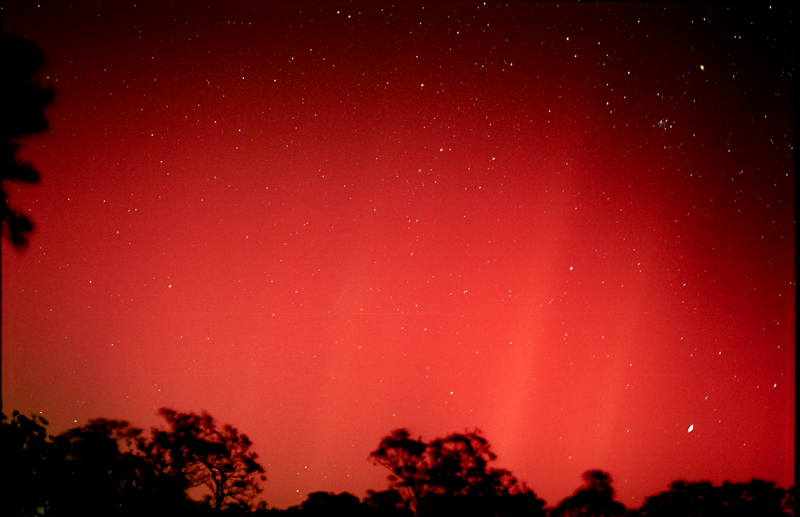
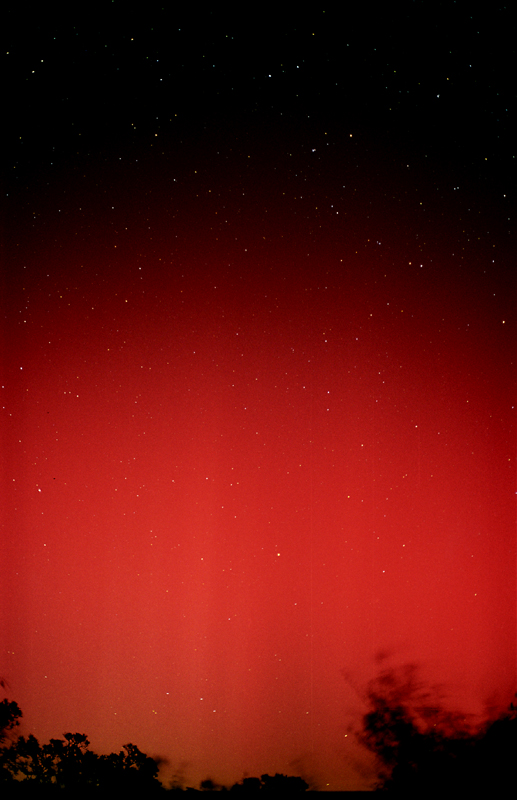
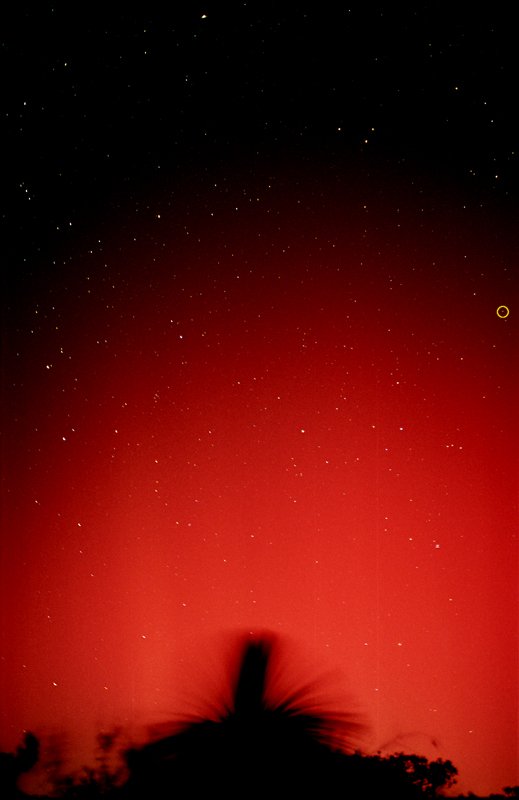
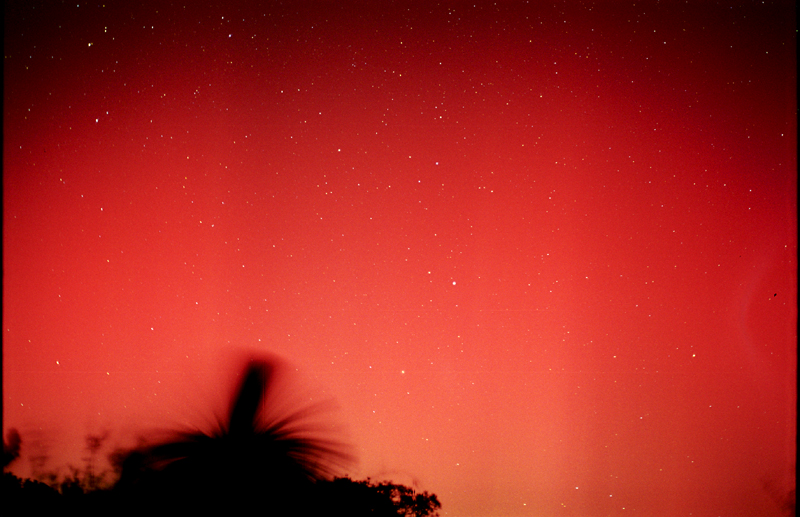
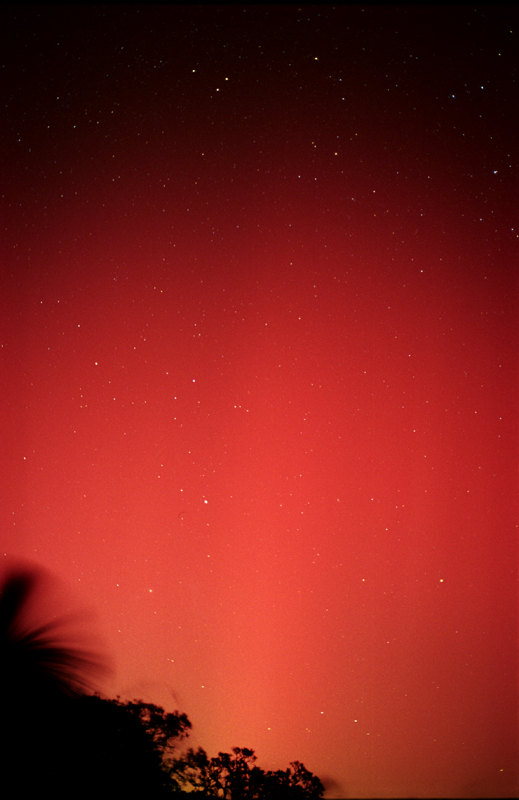
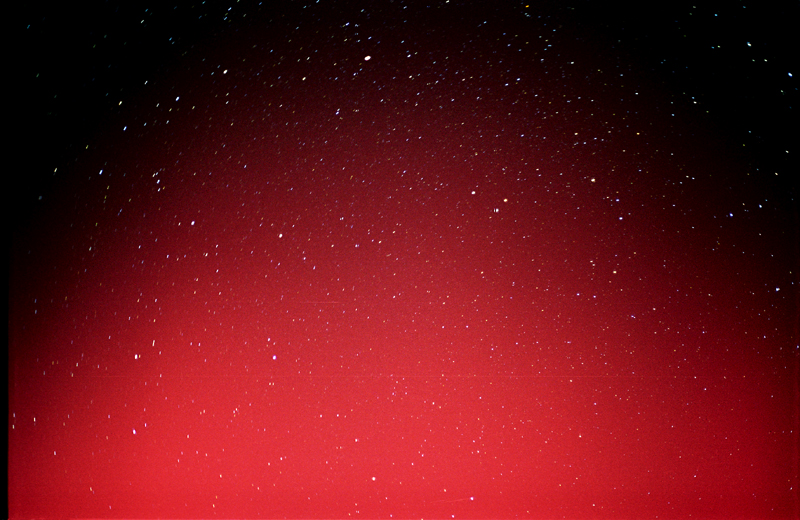
After about 30 minutes the display quietened down again. By this time my friends were very tired and had a long drive home facing them, so they decided to call it a night.
After they left I filled in time with some photography with my 5", while waiting to see if the display would flare up again. However I forgot that although the activity was not obvious to the naked eye, that did not mean that it had ceased! As a result my photographs were bathed in a redish glow.
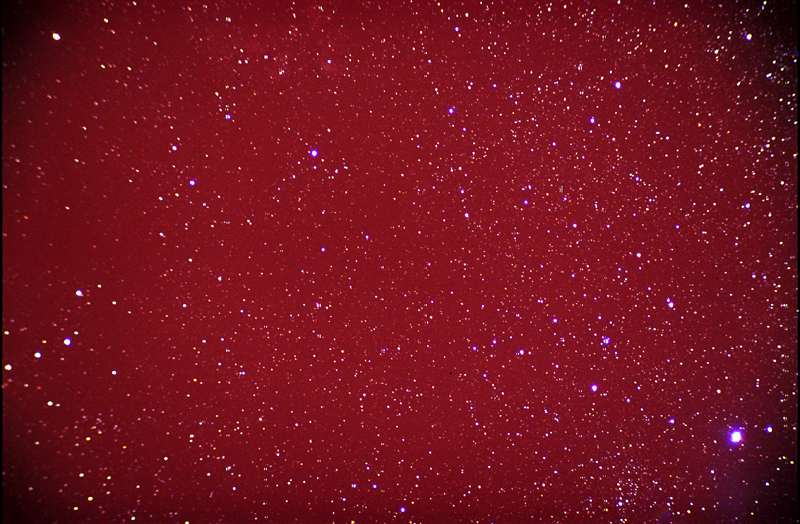
At around 2.45am, the aurora surged again, heralded by several bright rays. This time the aurora was even brighter and larger than before.
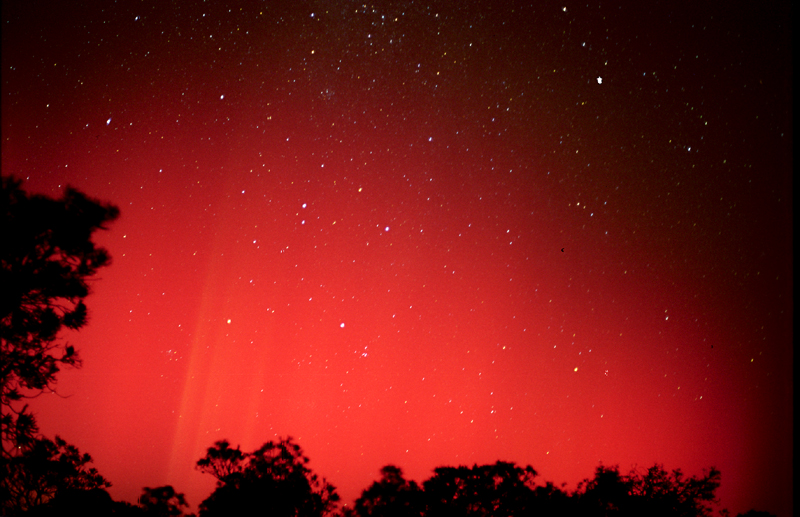
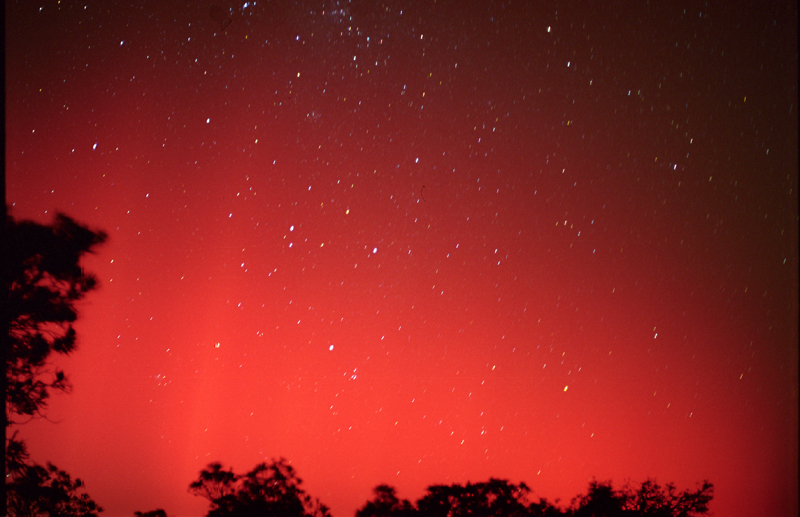
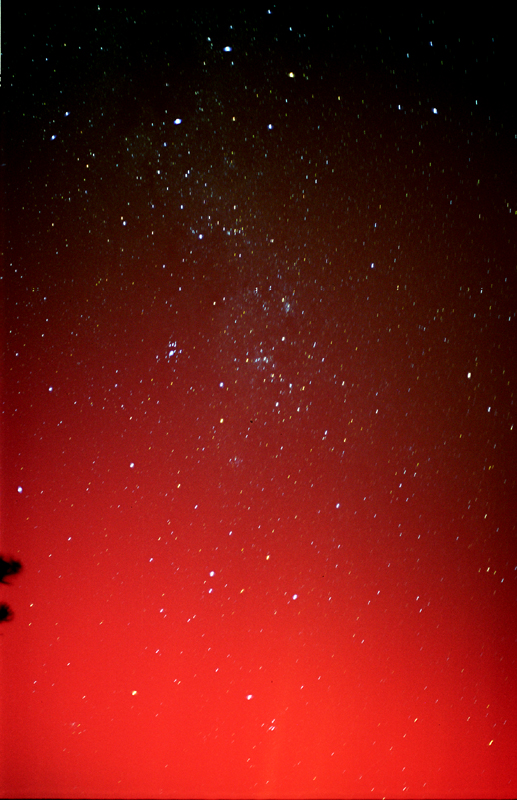
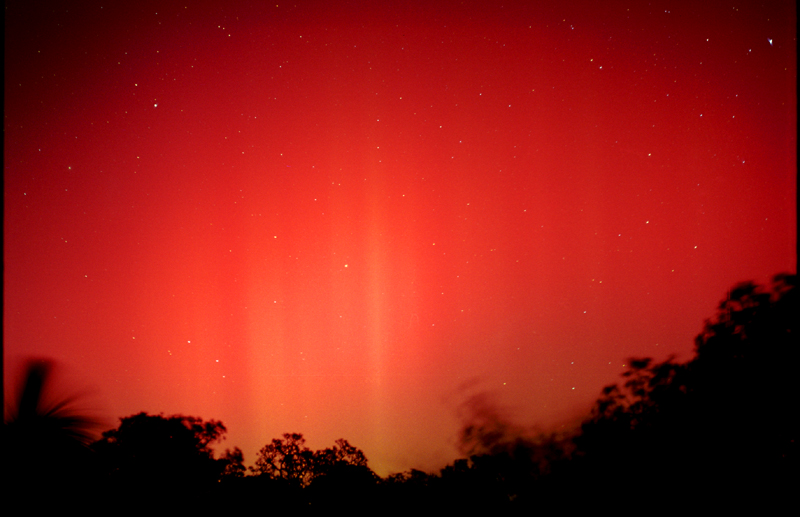

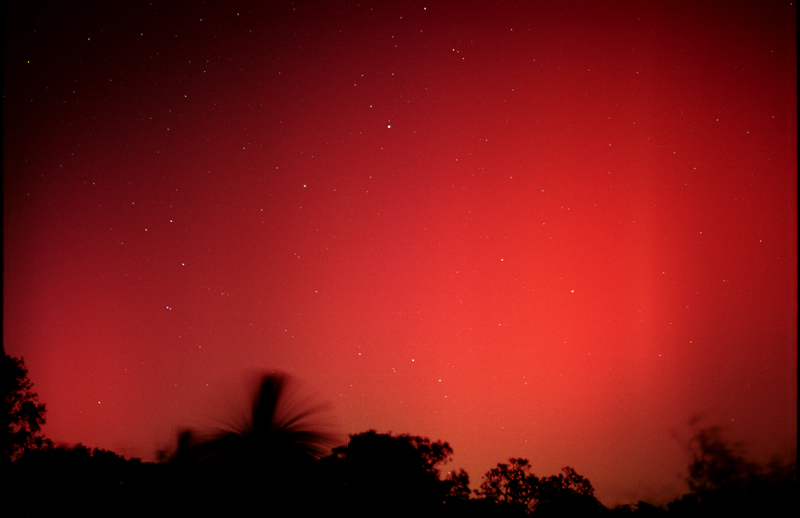
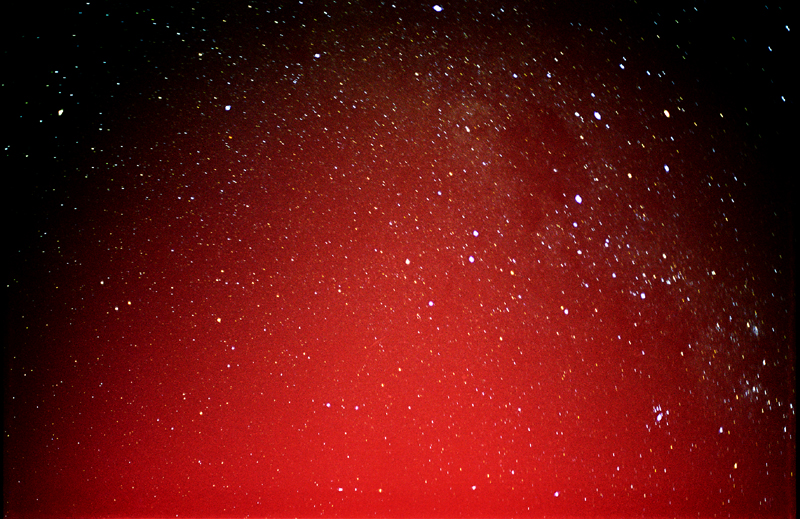
Once again the activity lasted about 30 minutes, after which the display became reduced to a faint glow in the south. At this stage, seeing as I had run out of film, I decided to call it a night and headed home. Even after I reached home at about 5.00am, the aurora could be seen as a faint glow in the south despite the light pollution from the street lights.
Without a doubt, this display was the best I observed from Western Australia. It was far brighter and larger that the major displays I observed in 1989 and 1991. I was most greatful for the internet and the Sky&Telescope aurora alerts. Without them I still would have been observing and so seen the aurora, but I would not have had any film!